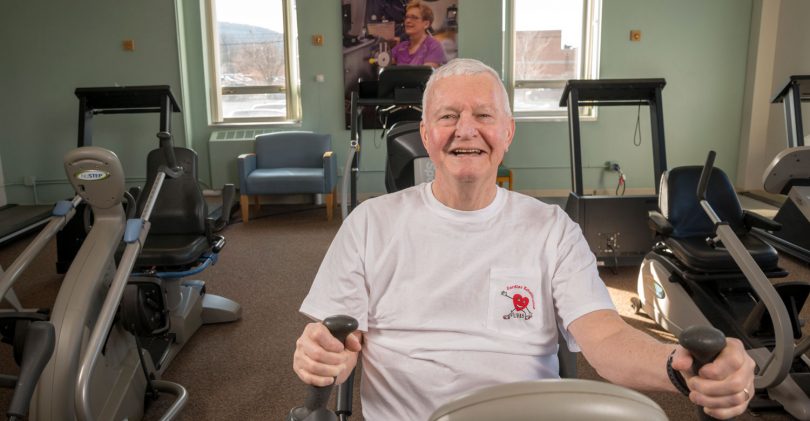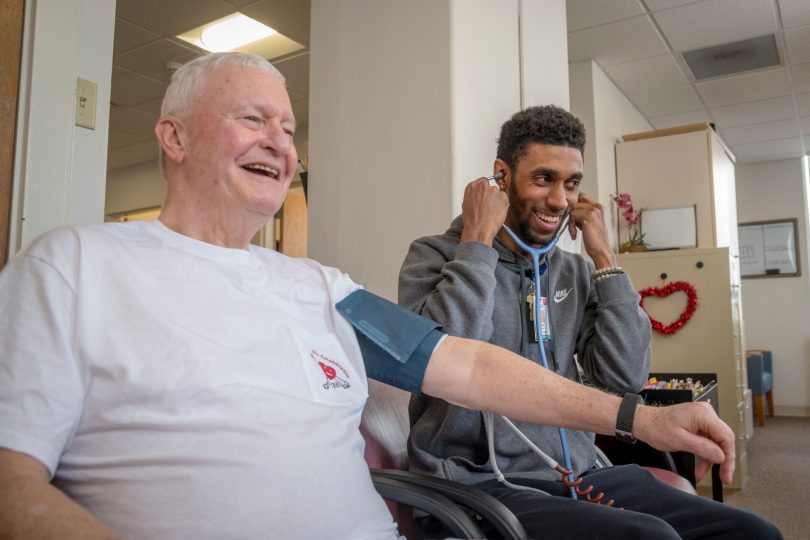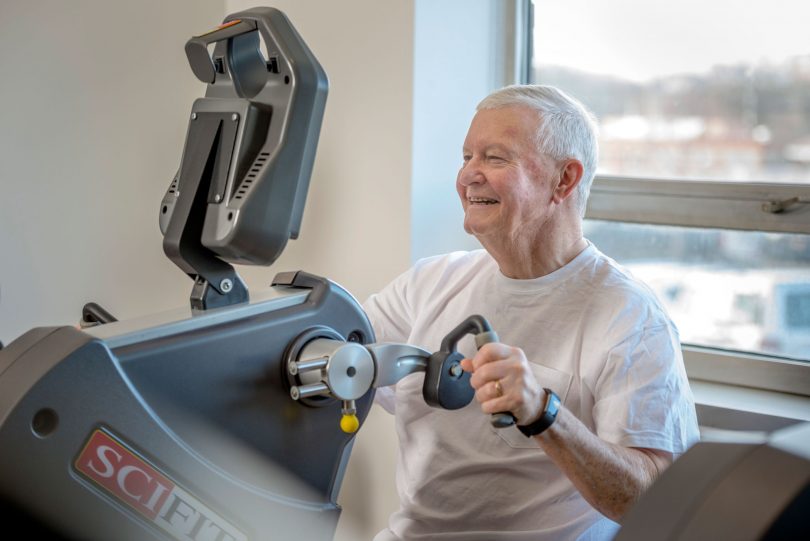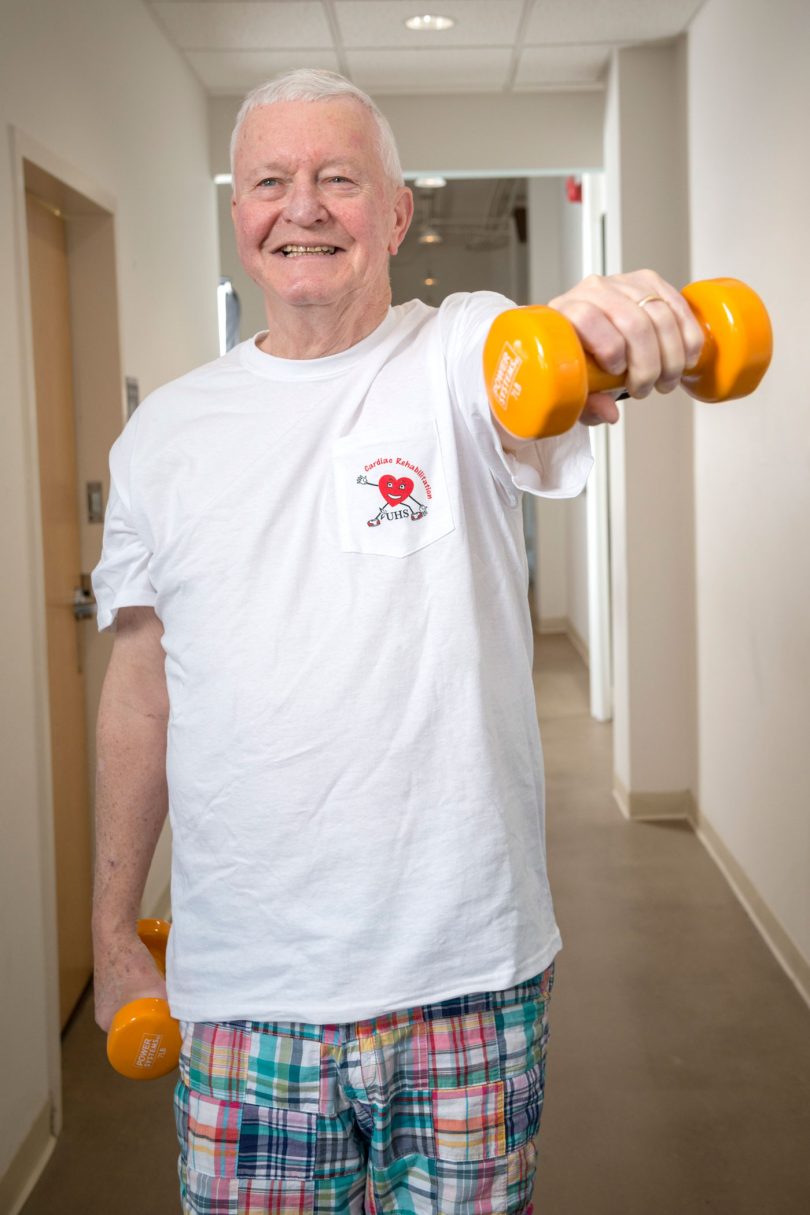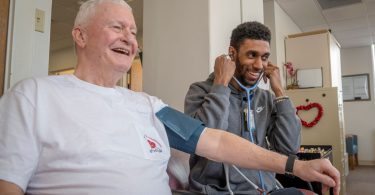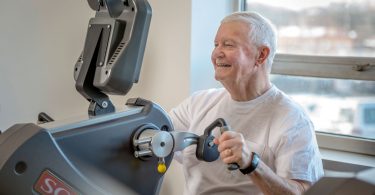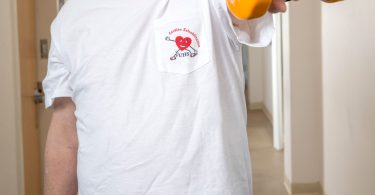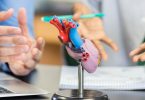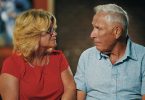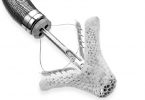Like many people who experience cardiovascular disease, Terry Purtell, a 69-year-old resident of Binghamton, first confused the symptomatic chest pain he felt with heartburn. A day after receiving heartburn medication, Mr. Purtell found himself in even worse pain. He went to the hospital and eventually received an angioplasty—on Christmas Eve.
While this initial experience, which occurred in 1994, pushed him into a healthier lifestyle for a while, that waned and in 2006 he had his second angioplasty. “I never met a bacon double cheeseburger I didn’t like,” jokes Mr. Purtell. After his second angioplasty, he went through another period of healthy living, but it wasn’t until experiencing an incredibly stressful time in 2013 and 2014, including losing his son to colon cancer and undergoing triple bypass surgery, that Mr. Purtell started to take healthy living seriously.
“It was a terrible experience and I was severely depressed after that surgery,” says Mr. Purtell. “I was told I should start cardiac rehab. They said it would be six or eight weeks and to try it and see if I like it. Well, it’s been six years and I’m still going because I really like it.”
Social Support
Cathy Eggleston, RN, nursing coordinator at UHS Cardiac Rehabilitation, works with Mr. Purtell and explains that cardiac rehab is often successful for patients like him because of the social support, both from UHS staff and fellow patients. “You’re with the same people every time you come to exercise, so there is huge support from other patients going through the same experience you are,” says Ms. Eggleston. “There’s a lot of camaraderie and that’s a huge benefit to patients participating in this program, especially if they might be afraid or reluctant to exercise in other situations.”
Cardiac rehab patients form bonds with each other and the UHS staff. Ms. Eggleston says that Mr. Purtell is the perfect example of this: “He has a great attitude and he’s always upbeat and positive,” she says. “When we have new patients or patients who are unsure about the program, he’s always willing to share some of his history and how well he’s doing with the exercise. He makes other patients feel more at ease.”
While Mr. Purtell may now be the perfect example of how cardiac rehab can change your life, it wasn’t always that way. He felt the camaraderie firsthand when he started going to cardiac rehab in 2014, and that paved the way for his current success.
“When I first started, I would see people in cardiac rehab with oxygen tanks, using walkers, using canes, and still coming in to use the machines,” says Mr. Purtell. “I was just inspired so much by these people, and that really did a lot for my state of mind. It made me want to get better because I was looking at people all around me also wanting to get better. Like they say, there is strength in numbers.”
Is Cardiac Rehab For Me?
At UHS Cardiac Rehabilitation, many patients who are in the program are referred by their doctor because they are currently receiving inpatient treatment or recently had a cardiac event. However, cardiac rehab is available to anyone with cardiac risk factors, regardless of their personal heart health history.
“Cardiac risk factors can include a lot of things—such as family history, poor diet, diabetes, or stress,” says Cathy Eggleston, RN, nursing coordinator at UHS Cardiac Rehabilitation. “The program is available to anyone with any risk factor, and all they need to participate is clearance from a physician.”
If you think you might benefit from a guided exercise program, talk to your physician, or contact UHS Cardiac Rehabilitation at 607-865-2155.
Pillars of Success
While support from staff and fellow patients makes a big difference, there are other ways that the UHS Cardiac Rehabilitation Program promotes patient success. Ms. Eggleston explains that the program is split into three phases: inpatient, outpatient but with a recent cardiac event, and fully outpatient. Usually patients “graduate” from the first two phases and then phase three can last as long as the patient likes. Mr. Purtell has worked out in the Cardiac Rehab Program for close to six years and Ms. Eggleston says they have a patient who recently celebrated his 25th year of participating in the program.
For patients in the first two phases, UHS staff monitor patients’ vital signs. “They are monitored for 36 sessions,” says Ms. Eggleston. “So throughout the program we are monitoring the progress of their cardiovascular exercise. We’re monitoring their heart rate, heart rhythm, and blood pressure to see how they respond to the exercises.” This not only gives the providers an idea of how the patient is doing, but it also ensures that exercise is performed at a safe level.
Also adding to the safety of Cardiac Rehab is the fact that is it done on-site at UHS, which means medical staff are already on hand in case of an emergency. Ms. Eggleston also points out that Cardiac Rehab staff can act as a liaison to a patient’s primary care or specialty provider if they notice something that might warrant a checkup. “We see our patients several times a week, so we can see changes in the files—for example, is their blood pressure spiking up? If we see something new, we will send that to their cardiologist so the patient doesn’t have to call the office and make an appointment,” says Ms. Eggleston.
And while helping patients improve their health through guided exercise is a key component of cardiac rehab, education is another strong pillar the program depends on. “Education is important because the patients aren’t just exercising, they’re also learning how to make lifestyle changes that are going to prevent further progression of their heart disease,” says Ms. Eggleston.
Cardiac Rehab Has Been a Lifesaver for Terry Purtell
From Rehab to Rockstar
Creating this environment where patients can thrive is the goal of UHS Cardiac Rehabilitation, and it has given many UHS patients, including Mr. Purtell, the opportunity to live a longer, healthier, more enjoyable life. “Cardiac rehab is a place I can go and it’s a reminder to get well and stay well—it’s a lifelong thing,” says. Mr. Purtell. “On your own, after a year you might think ‘I’m done,’ but when you’re at Cardiac Rehab with other people who are going through the same thing, it’s a constant reminder that this is something you need to work at and it needs to be part of your life.”
For Mr. Purtell, it’s the part of his life that keeps him healthy and able to enjoy the things he truly values in life: his family, including two grandchildren; working part-time for the local parks department doing maintenance on baseball fields, among other tasks; playing golf; and singing with friends in a barbershop quartet.
“I heard a guy on TV say, ‘I really want to be a rockstar grandpa,’ and I thought ‘You know, so do I,’” says Mr. Purtell. “If I’m walking around having problems breathing, I’m not going to be able to be that. So that’s just one thing I use for inspiration.”
And inspiration is a quality that Mr. Purtell does not lack. In addition to inspiring his fellow rehab participants on a weekly basis, he was named the “Inspirational Honoree” for the 2020 Southern Tier Heart Walk, which is being rescheduled due to the COVID-19 outbreak. “Terry is reaping the clinical benefits of continuing to exercise, but he’s also really enjoying himself, which makes him a great role model for other patients,” says Ms. Eggleston. “He shows them what you can do when you commit to making this lifestyle change.”
For Terry, the lifestyle change means more time spent fishing with his grandchildren, more weekly rounds playing golf with the “Over-the-Hill Gang,” or more performances with his quartet, such as their recent gig singing the National Anthem at a Binghamton University basketball game. It also means more time to inspire others. “I feel like I’m a representation of someone who had heart trouble and turned it around, and I’m just hoping that my story can get somebody else to look in the mirror and try to improve their life—to get a little healthier,” he says.
Simple Inspiration
We asked Southern Tier Heart Walk Inspirational Honoree Terry Purtell what advice he has for others who may be considering structured exercise such as UHS Cardiac Rehabilitation, or making lifestyle changes on their own. Here is his answer:
“I would say two things: Any of the things that you know aren’t good for you, do those in moderation. And keep moving—that’s it. Just keep your body moving, keep walking, keep exercising, because that’s the best thing for you. When I worked at the parks department, I would see women and men come in—in their 80s and 90s—just to walk around the center. And they would always say the same thing: ‘Terry, just keep moving.’ I think of that and it’s one of the things that gives me more inspiration.”
CHECK. CHANGE. CONTROL.
As part of our partnership with the American Heart Association, Terry Purtell will be honored at the Southern Tier Heart Walk, which has been postponed due to the COVID-19 outbreak. Learn more about this event and the rest of our AHA-sponsored Check It! Challenge at nyuhs.org.

